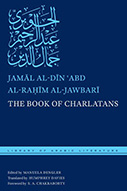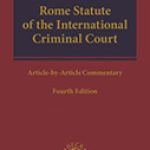The Book Of Charlatans

Author: Jamāl al-Dīn ʿAbd al-Raḥīm al-Jawbarī
Editor: Manuela Dengler | Translator: Humphrey Davie | Publisher: New York University Press. 2020. 528 pages.
Reviewer: Emilie Savage-Smith ǀ January 2022
Charlatans, tricksters, swindlers, and mountebanks have long been a source of fascination to modern writers, as indeed they were to the thirteenth-century Syrian author Jamāl al-Dīn ʿAbd al-Raḥīm al-Jawbarī. His was not the first book on the topic written in Arabic in the pre-modern era, nor was it the last, but it was certainly one of the most comprehensive.
For the first time we now have al-Jawbarī’s entire book on charlatans, Kitāb al-Mukhtār fī kashf al-asrār (The Book Containing a Selection Concerning the Exposure of Secrets) in a bi-lingual Arabic-English edition and translation. Portions of this remarkable treatise on fraudsters had been available in German or English translations by Eilhard Wiedemann and Stefan Wild, and were discussed in C.E. Bosworth’s The Medieval Islamic Underworld (Leiden, 1976), but with the volume now under review we at last have access to the full version of the treatise.
The treatise by al-Jawbarī was written in a colloquial, non-standard form of classical Arabic and is full of jargon. The translator, Humphrey Davies, is an award-winning British translator of both classical and modern Arabic treatises, and here he has provided a very spirited and readable, yet also reliable, translation of al-Jawbarī’s The Book of Charlatans. The Arabic treatise has survived in a large number of manuscript copies, suggesting a wide readership, and there have been a number of printed versions, all of them incomplete. For this edition, the editor, Manuela Dengler, has employed the two most complete and apparently oldest of surviving copies, one in Leiden, copied in 1314, and one in Istanbul, copied in 1317.
The volume is published by the New York University Press as part of the Library of Arabic Literature series, and as such it is designed (as is the entire series) to be accessible to non-academic audiences. Endnotes are kept to a minimum, while a short ‘Glossary of People, Places and Little-Known Simples’ provides basic information. Fuller discussions of the numerous plants and metallic substances mentioned by al-Jawbarī are provided through an on-line ‘Appendix II: Plants and Fungi Mentioned in The Book of Charlatans’, downloadable at www.libraryofarabicliterature.org/extra-2. ‘Appendix I: Vocabulary of Rare Words and Phrases Occurring in The Book of Charlatans’ is available at the same address.
Nothing is known of the author except what can be gleaned from the treatise itself. The name al-Jawbarī would suggest that his family were from al-Jawbar, a village to the east of Damascus that is now a suburb of today’s city. Al-Jawbarī indicates that he spent some time in Egypt in 1216 and in 1222 and again in 1226-1227 and that he had travelled widely in northern Syria and also through the western part of what is now Saudi Arabia on his way to Mecca. He claims also to have been to Cyprus, Bahrain and India. He also refers to two earlier books that he had written, one on geomancy and the other on astrology, neither of which are known to be preserved today.
Al-Jawbarī wrote The Book of Charlatans between 1232 and 1248 at the request of a minor ruler of the Turkmen Artuqid dynasty ruling Diyārbakr in south eastern Turkey from 1229 to 1232. The ruler had seen a treatise on the same topic written by an 11th-century writer in Cordova, and at a salon held at his court, he asked al-Jawbarī, one his courtiers, to compose a similar treatise, but one that was easier to understand. What prompted the ruler’s interest in swindlers and charlatans is not clear, but perhaps as ruler in Diyārbakr he was shielded from the ordinary life of the markets and bazaars where tricksters and mountebanks practiced their trade, and he was curious about them. However, by the time al-Jawbarī finished his Book of Charlatans, his patron had been deposed.
In The Book of Charlatans, al-Jawbarī lists several hundred books that he had read on a large range of topics, including frauds and mechanical devices. Whether he was a practitioner of any of the crafts of deception, or simply someone who had a good eye and had read a lot of earlier exposés of frauds and tricks, is unclear. He writes with the endless enthusiasm of a teenager who has discovered a library full of books and is keen to impress his listeners. Certainly he was a curious and omnivorous reader and ready to make use of all information reaching him. It is difficult to know how much exaggeration, if not creativity, has gone into his exposés. Quite certainly he wanted to impress his patron with how much he knew. Throughout The Book of Charlatans there is a constant refrain saying that he could give endless more examples were he not concerned about boring the reader.
Al-Jawbarī’s stated aim is not just to describe tricksters but to provide exposés of their working techniques. It is notable that he never criticises the techniques of properly trained astrologers or geomancers, but only those pretending to be astrologers or geomancers.
The frauds and scams he describes in this book are far too numerous to be enumerated here in their entirety. They include creating illusions and other feats of sleight-of-hand, whose practitioners the author says are not as great swindlers as other groups. These illusions include three classic tricks of jugglers that are still popular today in European fairs and circuses: (1) the cup and balls trick or shell-game, (2) the egg-bag, a small cloth bag with a secret pocket in which an egg can be made to appear or vanish, and (3) tricks with liquids in vessels that have secret reservoirs or holes. There was an extensive Arabic literature on mechanical and pneumatic devices and trick drinking vessels, from which the would-be trickster could draw guidance for equipment. Making paper rise up and float was another illusion. An extreme example is the talking ‘severed’ head that rests in the middle of a copper plate, after which the assistant, who has been sitting in a chamber underground with his head protruding through the plate, must be murdered so as not to give the trick away.
He also describes the classic goldbrick confidence trick: the trickster gilds or silvers a brass ornament to make it look more valuable, leaves it on a quiet street, and then conceals himself. An innocent passer-by sees it and takes it for his own, but the trickster springs out and claims it at the same time. The trickster, however, then says he is prepared to sell his share to the ‘mark’ (victim), after which he takes the money and disappears before the object can be properly assayed and valued.
A common theme is the means by which the trickster gains the confidence of a potential victim. Codes are used to pass information to or from an assistant. Items are sometimes hidden beforehand. Someone might enter and pretend to be an epileptic whom none of the local physicians can cure, but the trickster succeeds. Often the swindler invests some cash up front in order to establish credibility with his potential victim, and then the ‘mark’ puts down more money, and the trickster walks off with it all.
Techniques of thieves receive considerable attention. There are ‘sneak thieves’ who employ a pigeon or a cat or a child as a decoy. Some thieves are expert in disarming traps where treasure has been hoarded. Some enter people’s houses by making holes in the walls, while horse-stealers follow the encampments of nomadic peoples. Some even administered stupefacients to get someone to tell where buried treasure was to be found.
Some of his swindlers draw up fraudulent contracts and falsify signatures, or can remove writing and change accounts in ledgers. There are those who can walk through fire, or manipulate it, without being harmed, having applied a special compound to protect their skin. When discussing the tricks of monks, al-Jawbarī describes a number of automata, including an icon in the church of Ṣaydnāyā near Damascus that remains upright under a dome, with no visible means of support, neither rising, falling or tilting, held in place by means of magnetism. There are Sufis who claim to be able to stop rain or to find water. The excesses of various pretend dervishes come under scrutiny, especially those with techniques giving them access to beardless boys. And the cunning and duplicity of women is the topic of the final chapter of the book.
One of al-Jawbarī’s greatest interests is exposing artisans who produce faked products – jewellers, for example, who make fake pearls, rubies, and topaz. Much attention is given to alchemists, for whom, he says, he has uncovered 300 methods employed to cheat people. An example is making gold from charcoal, a gold nugget having been placed in a crucible with charcoal on top to which the trickster adds a special ‘sauce’, and when the crucible is heated the gold nugget becomes visible while a jar of the useless ‘sauce’ is then sold to the ‘mark’ as a means of making gold.
He is particularly concerned with hawkers of quack medicines who attract their customers with stories and tricks. There are apothecaries in the bazaar who adulterate expensive drugs or make fake medicines. Others produce fake lapis-lazuli, indigo or cinnabar, and some compound and sell deadly poisons. Yet others make artificial foodstuffs such as fake honey from figs and other ingredients or produce artificial clarified butter. Many of the market quacks compounded drugs that would affect a person’s ability to understand what is happening, particularly useful for thieves. These stupefacients usually included cannabis and the related marijuana, as well as henbane and opium in its various forms.
Medical practitioners, druggists, alchemists, and charlatans often shared the same workspace – particularly the markets. The elite medical community comprised of court physicians and those overseeing hospitals was concerned to disassociate itself from the fraudulent practices of market doctors. Scholars with an interest in social history would do well to read the tract by al-Jawbarī alongside the autobiographical discourse by the thirteenth-century Cairene physician Ibrahīm al-Qalyūbī, who struggled to make a living in the markets of Cairo and was resentful of the contempt with which market medical practitioners were viewed. A study by Ignacio Sánchez of al-Qalyūbī’s autobiographical essay will be published later this year in Medieval Worlds.
Market physicians, al-Jawbarī says, would surreptitiously put worms in people’s mouths and then remove them in order to make the patient believe that a worm causing tooth decay had been extracted from the teeth. At times al-Jawbarī indulges in anti-Jewish diatribes, perhaps due to the perceived predominance of Jewish physicians in his day. For example, he explicitly states that Jewish physicians cannot be trusted and may even try to kill their patients, giving as an example a Jewish quack who is asked by a wife to kill her husband, which he agrees to do provided she has sex with him, arguing that the sperm is needed to produce the lethal drug.
Accounts are given of money-changers who had various ways to make the coins appear to weigh more. One technique was to affect the reading of the scales by passing a magnetic ring nearby. In another instance, al-Jawbarī describes a money-changer who was able to alter the weight used on the scales even after the weight had been stamped by a market inspector. From the twelfth century onward, there were manuals of market inspection (ḥisbah) which expounded the duties of the market inspectors (muḥtasibs) tasked with maintaining standards in the market and whose duties included checking the accuracy of weighing devices used by the money-changers as well as druggists and physicians. This account of a money-changer still able to falsify the weight of coins after the market inspector had certified the equipment is the only instance in The Book of Charlatans in which al-Jawbarī refers to any law or regulation that might be transgressed. Nowhere is the topic raised of punishment for a fraud or confidence game or swindle.
Emilie Savage-Smith, Professor of the History of Islamic Science (retired), The Oriental Institute, University of Oxford


